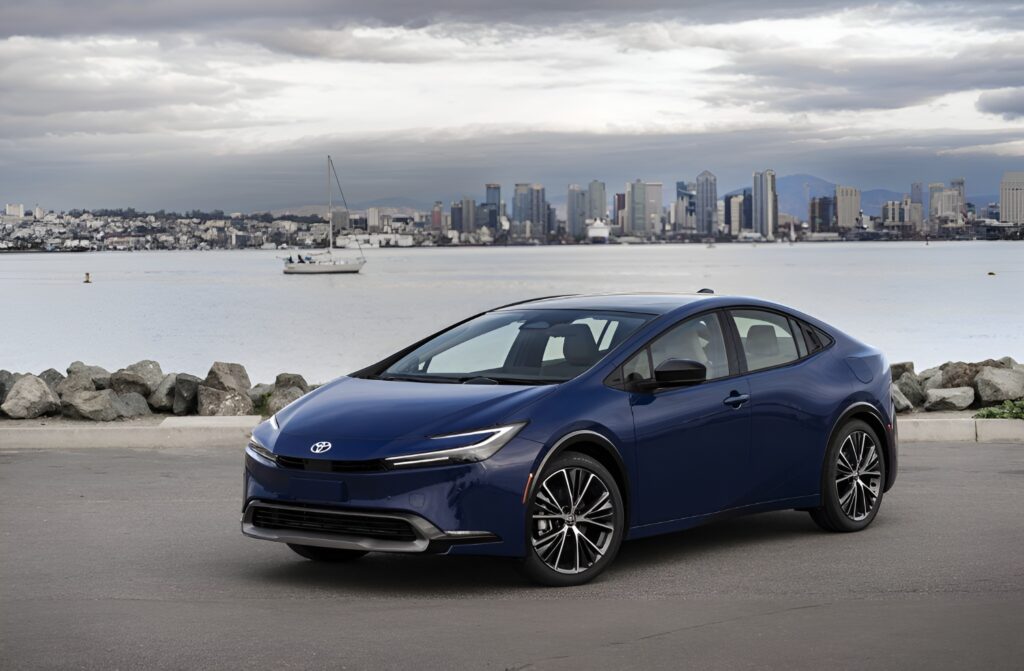
Price: $28,545- $35,560
8 /10
Rating
Pros
- Sturdy Acceleration
- User-Friendly Tech
- Intelligent Driver Aids
- Efficient Performance
Cons
- Limited Headroom
- Cargo Constraints
- Visibility Issues
- Engine Noise
Overview: 2023 Toyota Prius
Toyota’s fifth-generation Prius isn’t just a fuel-efficient car—it’s a sweetened offering that silences the universal gripe about lackluster acceleration. Gone is the fourth-generation Prius’s 121 system horsepower; the 2023 model’s 194-hp front-wheel-drive hybrid powertrain rockets from 0 to 60 mph in 7 seconds (down from 10.7 seconds in the last Prius tested), making merging onto highway entrances a considerably easier task. As an eco geek who’s test-driven countless hybrids, I’ll admit: accelerating quickly in a Prius feels surreal.
The redesign isn’t skin-deep. That ugliest car label? Toss it. The exterior design now flaunts a sleek shape, low roofline, and wide stance—think gorgeous butterfly, not econobox. Inside, the overhauled interior blends a modern aesthetic with a driver’s-space layout. Sliding into the low seating position, you’re greeted by an 8-inch touchscreen (or optional 12.3-inch display), ambient lighting, and a tech suite that outshines the Toyota Crown Hybrid. The panoramic glass roof and respectably roomy cargo area prove hatchback practicality isn’t dead, even as hybrid SUVs dominate.
Toyota didn’t sacrifice manufacturer-estimated fuel economy (up to 57 mpg) for performance gains—a transition that’s rare in today’s hybrid movement. After years of previous models feeling like a eco chic compromise, this new car is a transformation. It’s not just a robust hybrid powertrain; it’s a host of vehicles in one—modern cabin, available features, and all.
What's New in the 2023 Toyota Prius?
The 2023 Prius enters its fifth-generation with a redesigned look and a stylish new look both inside and out. Built on the TNGA-C platform, it’s leaner, more rigid, and has a wider stance with a lower driving position. Toyota estimates its fuel economy at 57 mpg combined, while the all-wheel-drive models get a high-output magnet in the rear motor for better traction. With 196 horsepower, it’s considerably quicker than its hybrid rivals, while the 220-hp Prius Prime plug-in hybrid offers additional power but is reviewed separately.
Pricing, Trim Levels, and Best Choice
With a starting price of $28,545, this hybrid balances efficiency and affordability while staying true to Toyota’s green promise. The price can reach $35,560, depending on the trim and options, but even the base models come with essential safety equipment like blind-spot monitoring and rear cross-traffic alert. Stylish 17-inch wheels enhance the look, while a well-equipped lineup of extra features ensures a smooth ride without frequent stop for gas.
$39,876
$42,764
$44,760
$46,560
$51,990
Powertrain, Transmission, and Driving Dynamics
Toyota’s 2023 Prius ditches its “slow hybrid” rep with a 194-hp hybrid powertrain that’s quicker than the Camry Hybrid and Elantra Hybrid. The 2.0-liter hybrid inline-four gasoline engine pairs with a high-output permanent magnet electric motor, delivering a 60 percent power increase over last year’s Prius. I’ve flogged this lineup—the front-wheel drive model hits 7.1 seconds from launch to 60 mph (vs. 10.5 seconds in the previous test), and while economy-biased tires offer not much grip, the larger front and rear brakes help it stop sooner (just 171 feet from 70 mph). Opt for all-wheel-drive Priuses, and the rear axle’s electric motor adds bite when you merge onto a highway or climb a long grade. The continuously variable automatic transmission handles the hybrid power transition smoothly, though I’d swap those tires for stickier tires to make it fun to whip around turns.
Fuel Efficiency and Driving Range
The Prius name has always meant fuel efficiency, and the 2023 Toyota Prius doesn’t disappoint. Check the EPA’s website, and you’ll see the front-wheel-drive models hit up to 57 mpg city and 56 mpg highway—a 4-mpg improvement over the last-gen. Even the all-wheel-drive LE variant earns 49 to 54 mpg combined, thanks to the largest year-over-year fuel-economy jump (a 6-mpg improvement on XLE and Limited trims). During my real-world testing route in the Limited FWD Prius, I observed 52.3 mpg, matching its EPA estimated 52 mpg combined. Yes, the more powerful powertrain and larger engine knock 3 mpg off the AWD models, but that’s still stellar for a car that’s quicker. This latest model proves better fuel economy doesn’t have to mean boring.
Premium Interior and Comfort
Toyota’s latest design sharpens the Prius interior with a lower center of gravity (down 2.0 inches) and a sleeker roofline, but the cost of practicality shows: headroom in short supply for rear passengers over 6 feet tall (I hit my head on the ceiling during seat adjustment), and thick rear roof pillars paired with an angled rear window create poor rear visibility—duck down at intersections. The XLE trim adds heated front seats and rear heated seats, while the faux leather steering wheel and well-placed controls in the conventional dashboard layout feel easy to interact with, avoiding the cluttered display of older models. But backseat room? Tight. Rear door openings are awkward, and if you slouch down, the shrunk gauge cluster’s placement and shape can feel partially blocked. Still, the new shape balances visual appeal with functional touches like more cup holders and a digital instrument cluster that ditches too much information. Just don’t expect SUV space—this conservatively designed cabin prioritizes front passengers over those in the higher trim back rows.
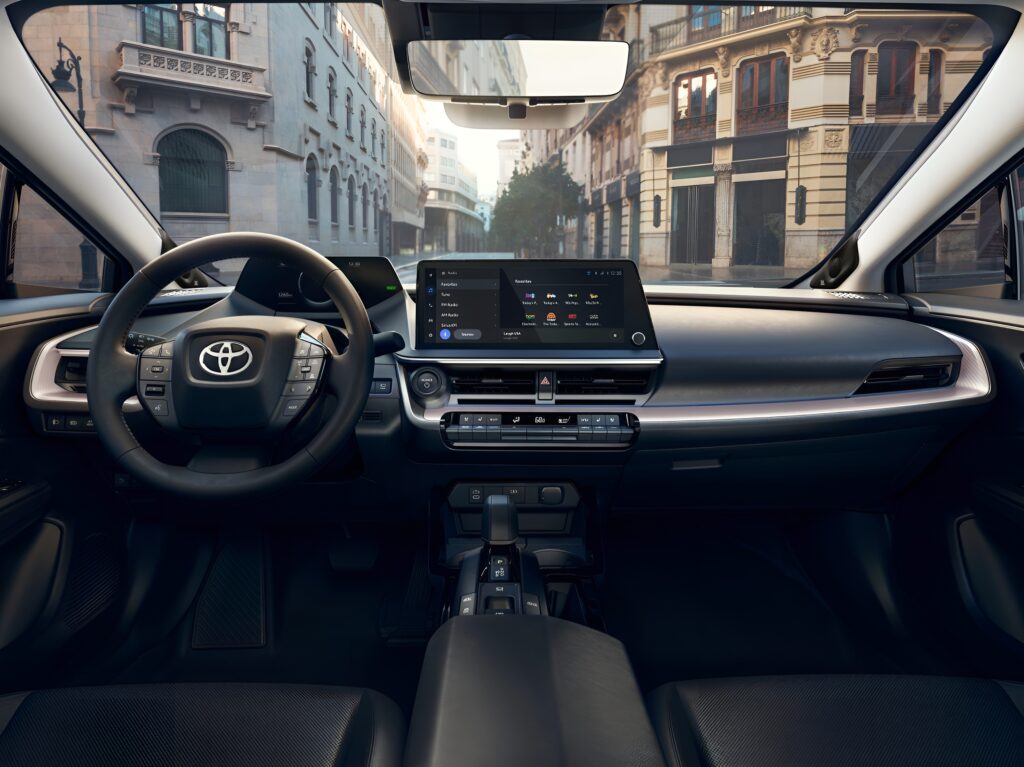
Cargo Storage
The 2023 Prius’s cargo space shrinks to 20.3 cubic feet—less than previous models—thanks to a raised cargo floor that eats into practicality. While it’s still a hatchback, don’t expect to cram golf clubs easily; my weekend bag barely fit lengthwise. Up front, the skinny-but-deep center console bin (great for store small items like wallets) and larger-than-usual cupholders (they’ll fit most water bottles) help, but under the dash and around the gear shifter, storage is none to be found. The underfloor storage offers a rubberized space for muddy shoes or tools, but the rear seats don’t fold flat, making bulky loads tricky. Compared to a similarly sized sedan, it’s skinnier but smarter—just don’t call it roomy.
Infotainment, Connectivity, and Smart Tech
Let’s be real: most car tech feels half-baked. Not here. The 2023 Prius packs a 12.3-inch center touchscreen (finally standard on LE and XLE trims) with a clean interface that’s actually responsive—no lag when swapping between Google-powered navigation and Android Auto or Apple CarPlay. But Toyota’s wireless charging pad in higher trims? It’s not cooled, and after 15 minutes, my phone got toasty—I bailed and used the six USB-C ports to charge conventionally. The Hey Toyota voice control works shockingly well for skipping songs or adjusting AC, and cloud-based infotainment updates mean no dealership trips—just over-the-air updates while you binge podcasts via available Wi-Fi.Beyond the screen, the cabin’s driver aids are sneakily clever. The lane keeping assistance system isn’t naggy—it gently steers the hybrid centered in lane—while adaptive cruise control and Proactive Driving Assist give subtle hints to the driver. When traffic slows ahead, the Prius braking subtly or the LED strip on the dash glows amber, nudging you to lift off gas and start slowing down. It’s all not overbearing, just quietly confident. Even the larger screens (optional equipment for XLE) feel purposeful, not gimmicky. After our testing, I’d say Toyota nailed tech that works—not just tech that exists.
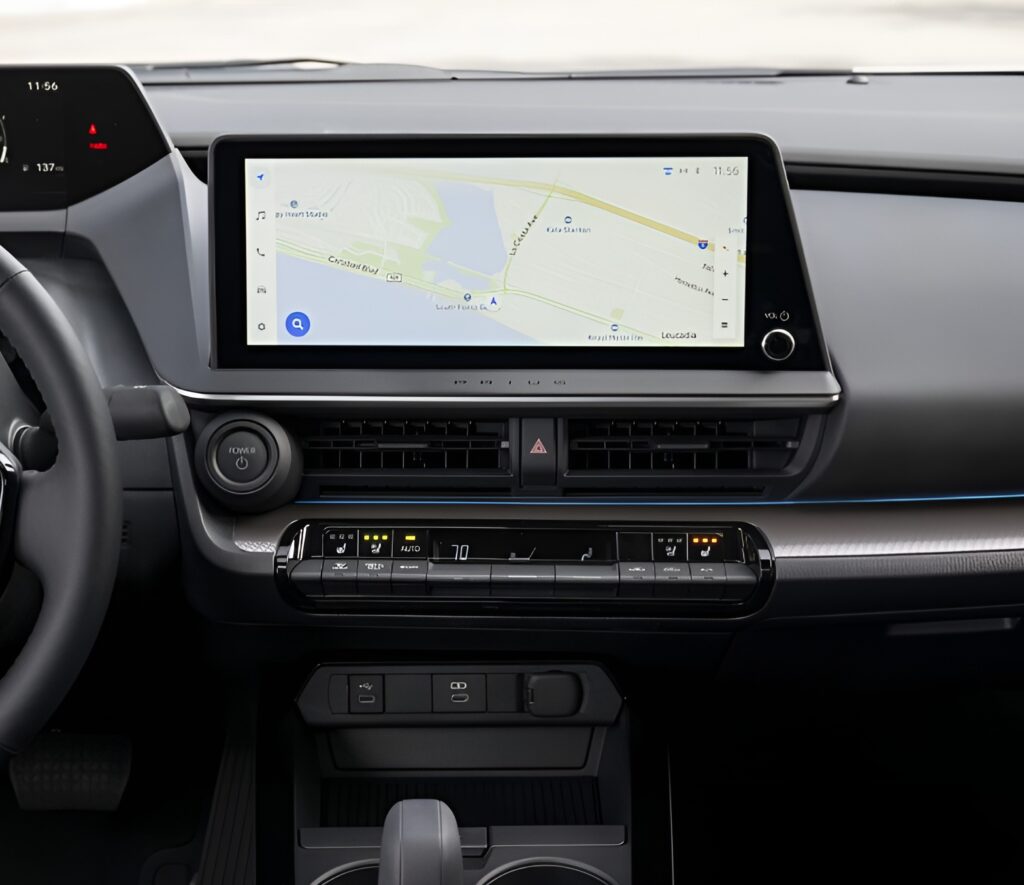
Wildcard
Once a regular on ugliest car lists, the 2023 Prius gets a dramatic makeover—now sleek and cohesive, with a design that’s undeniably more attractive. The main attraction? It’s still a hybrid that retained efficiency (hello, impressive mpg!), but in the bargain, Toyota dropped a big increase in power that lets it hang with quicker compact cars. Sure, the rest of the car feels not very exciting—think practical switches and muted cabin vibes—but after years of driving hybrids that prioritize virtue over verve, this Prius feels like a revelation.
Safety and Driving Support
The Prius stands out with its standard driver-assistance technology, offering features that some competitors include only in option packages or upper trim levels. Safety remains a priority, with advanced systems designed to protect passengers in every drive. The National Highway Traffic Safety Administration (NHTSA) and Insurance Institute for Highway Safety (IIHS) conduct crash-test results, ensuring top-tier protection.
Key features:
✅ Automatic high-beams improve night visibility.
✅ Lane-departure warning alerts drivers of drifting.
✅ Pedestrian detection enhances urban safety.
Toyota's Warranty and Maintenance Plan
The 2023 Prius delivers above-average coverage that outshines competitors, starting with a limited warranty (basic 36,000 miles or three years) and a powertrain warranty stretching to 60,000 miles or five years. But the star is the hybrid-component warranty, covering hybrid components for ten years or 150,000 miles—a rare perk in the industry-standard landscape. Toyota sweetens the deal with complimentary scheduled maintenance for two years or 25,000 miles, letting you skip the nickel-and-diming common elsewhere.
Key features:
✅ Basic coverage: 36k miles/three years for bumper-to-bumper.
✅ Hybrid protection: 150k miles/ten years on critical parts.
✅ Free maintenance: 25k miles/two years of included care.
7.5 / 10
9.0 / 10
9.0 / 10
8.0 / 10
8 /10
Rating


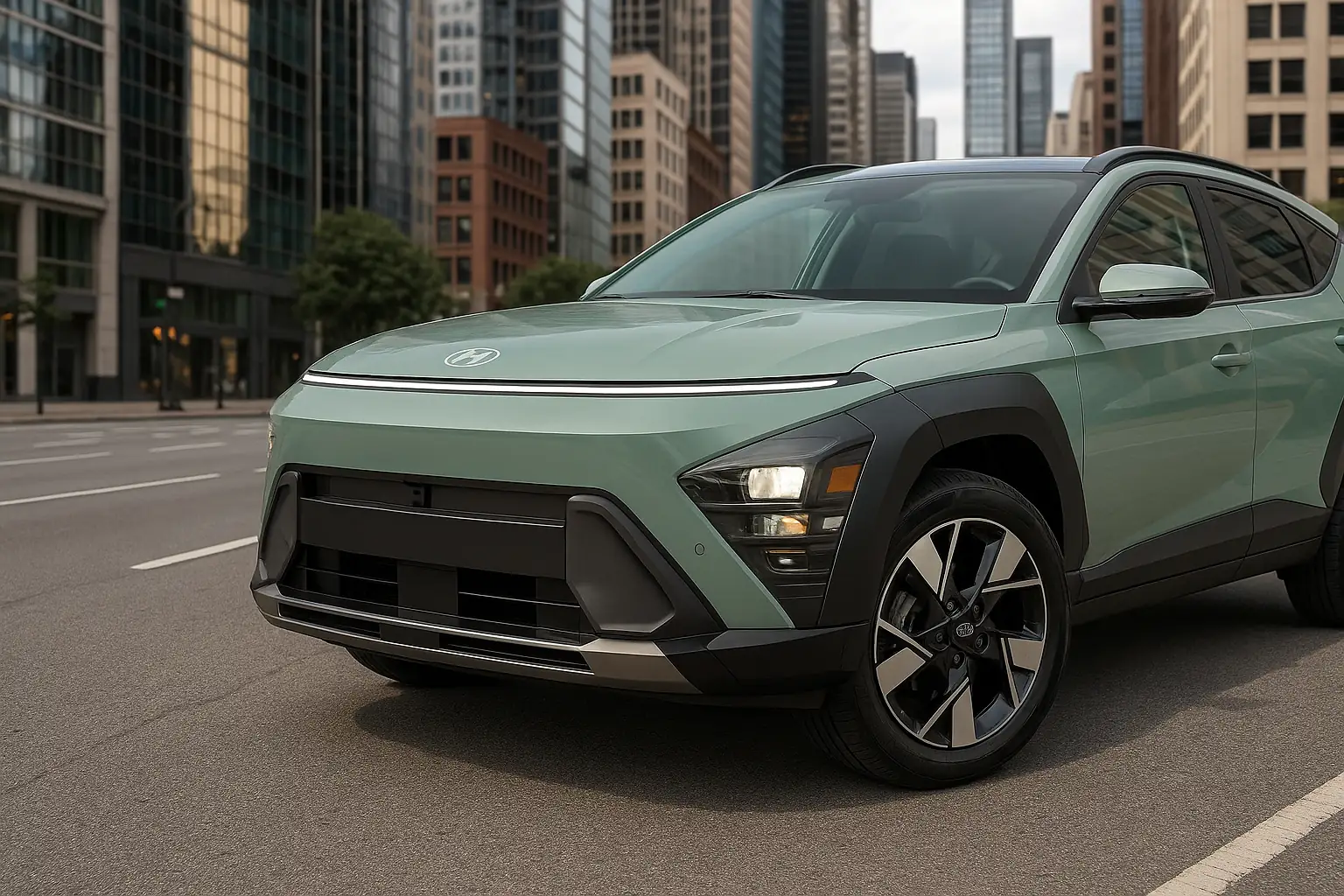
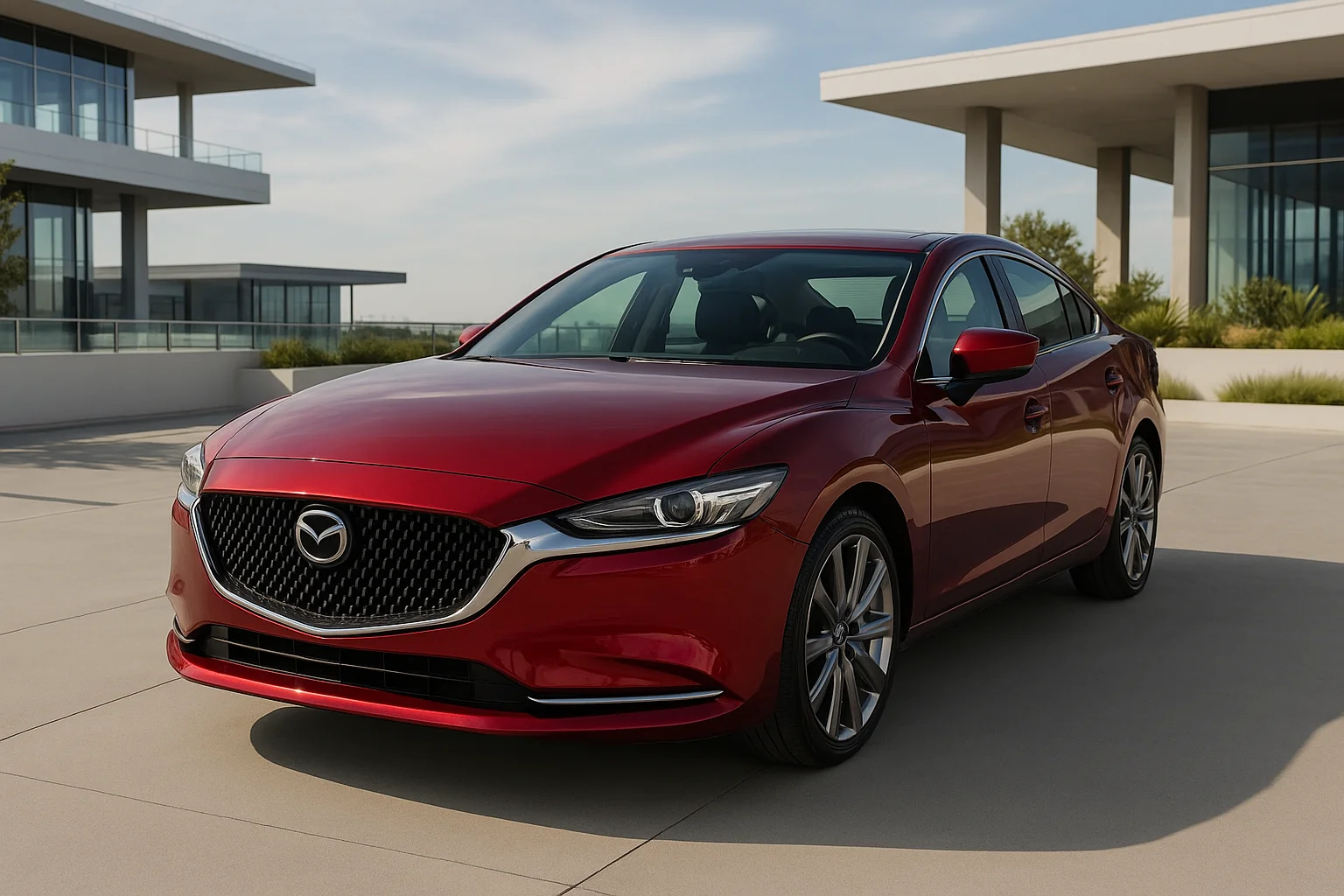
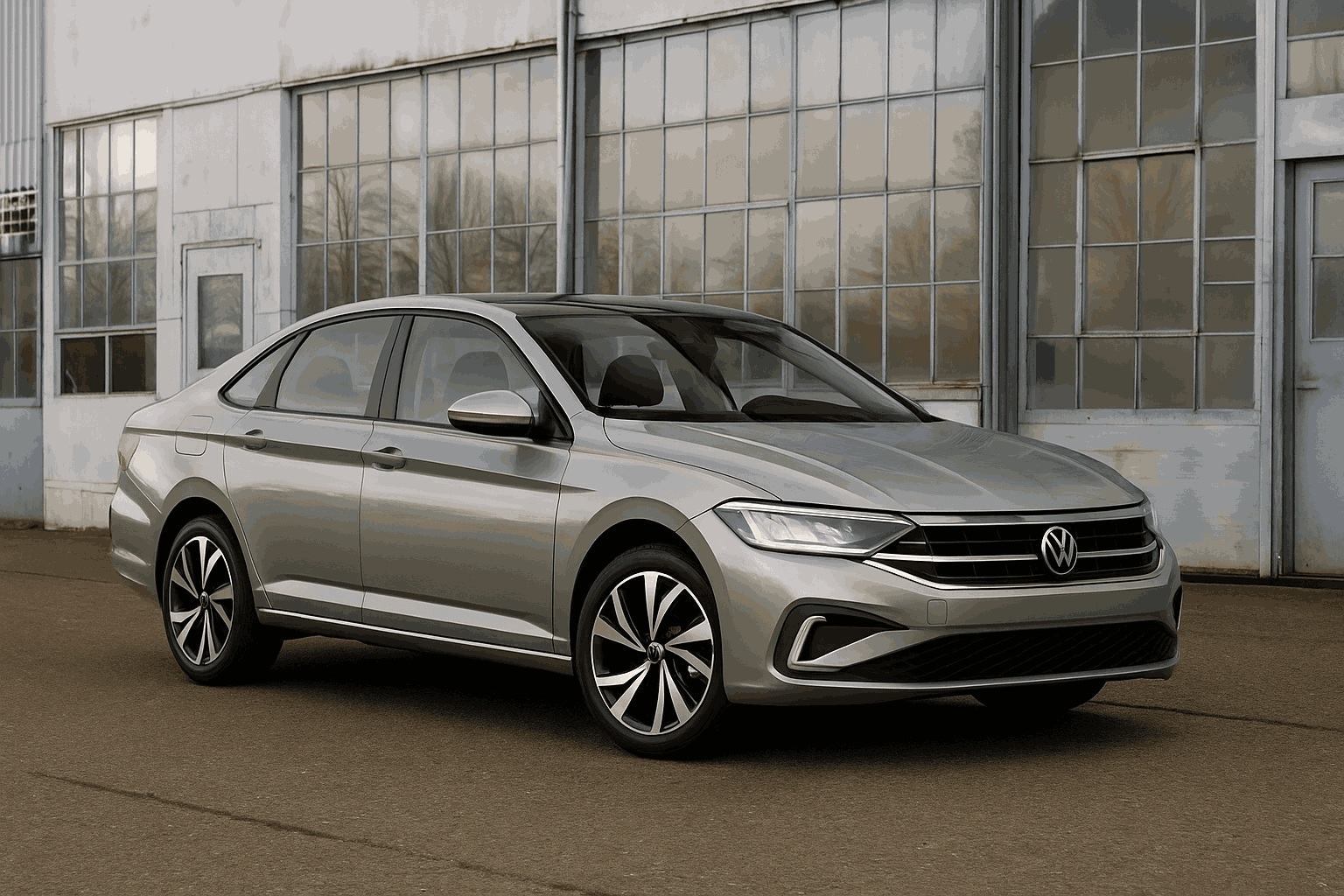
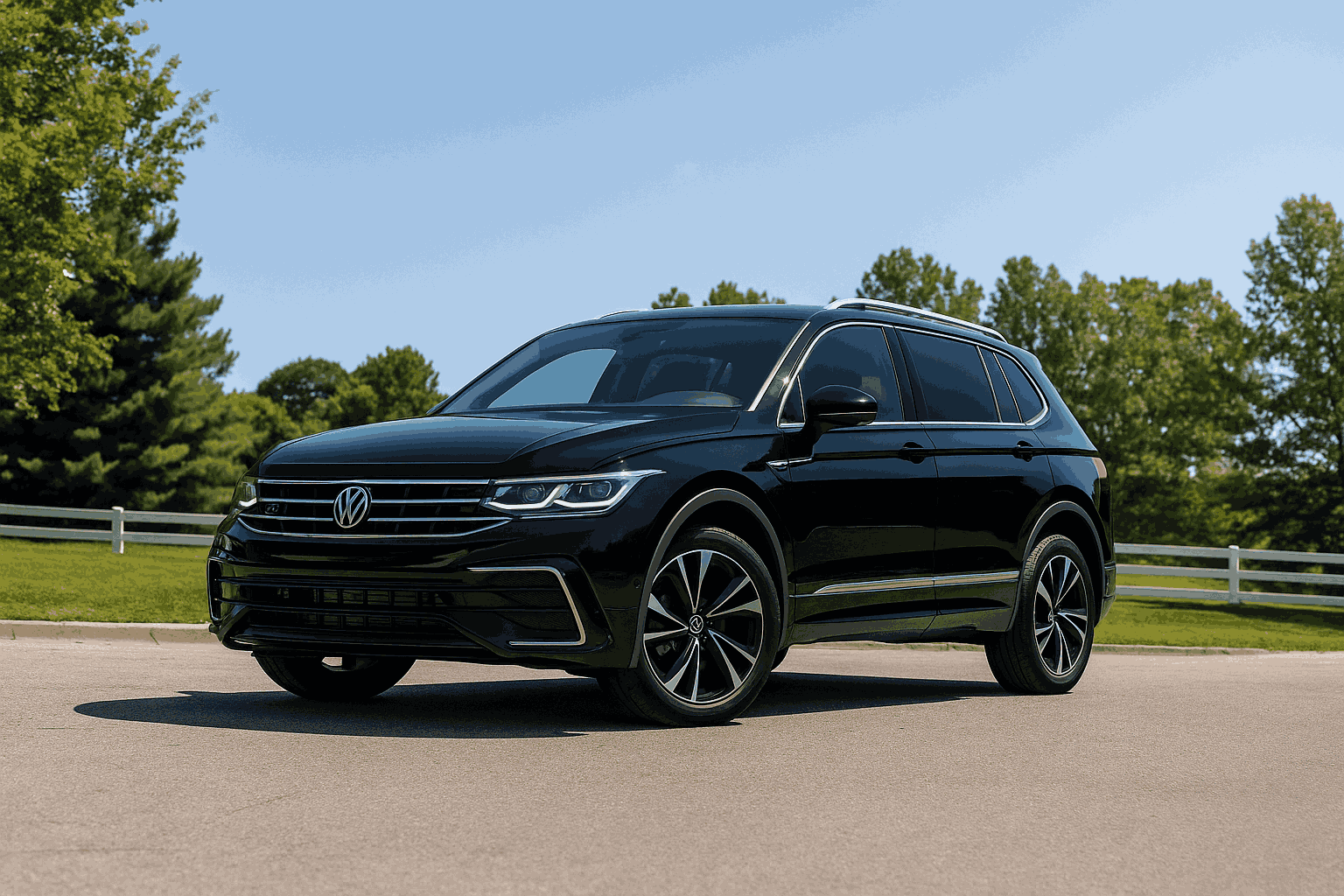
This Post Has 7 Comments
Pingback: 2024Toyota Grand Highlander Hybrid Review: Power, MPG, Value?
Pingback: 2025 Lexus IS 350 F Sport Review: Price, Power & Pictures
Pingback: 2024 Toyota Corolla Cross Hybrid Review: Price, Specs & Performance
Pingback: 2024 Lexus UX 250h Premium Review: Performance, Value & Tech
Pingback: 2023 Camry Hybrid Review: Discover 51 MPG & Reliability!
Pingback: 2024 Toyota Corolla Hybrid SE Nightshade review
Pingback: 2023 Toyota Venza Nightshade Review: Sleek Hybrid SUV Tested